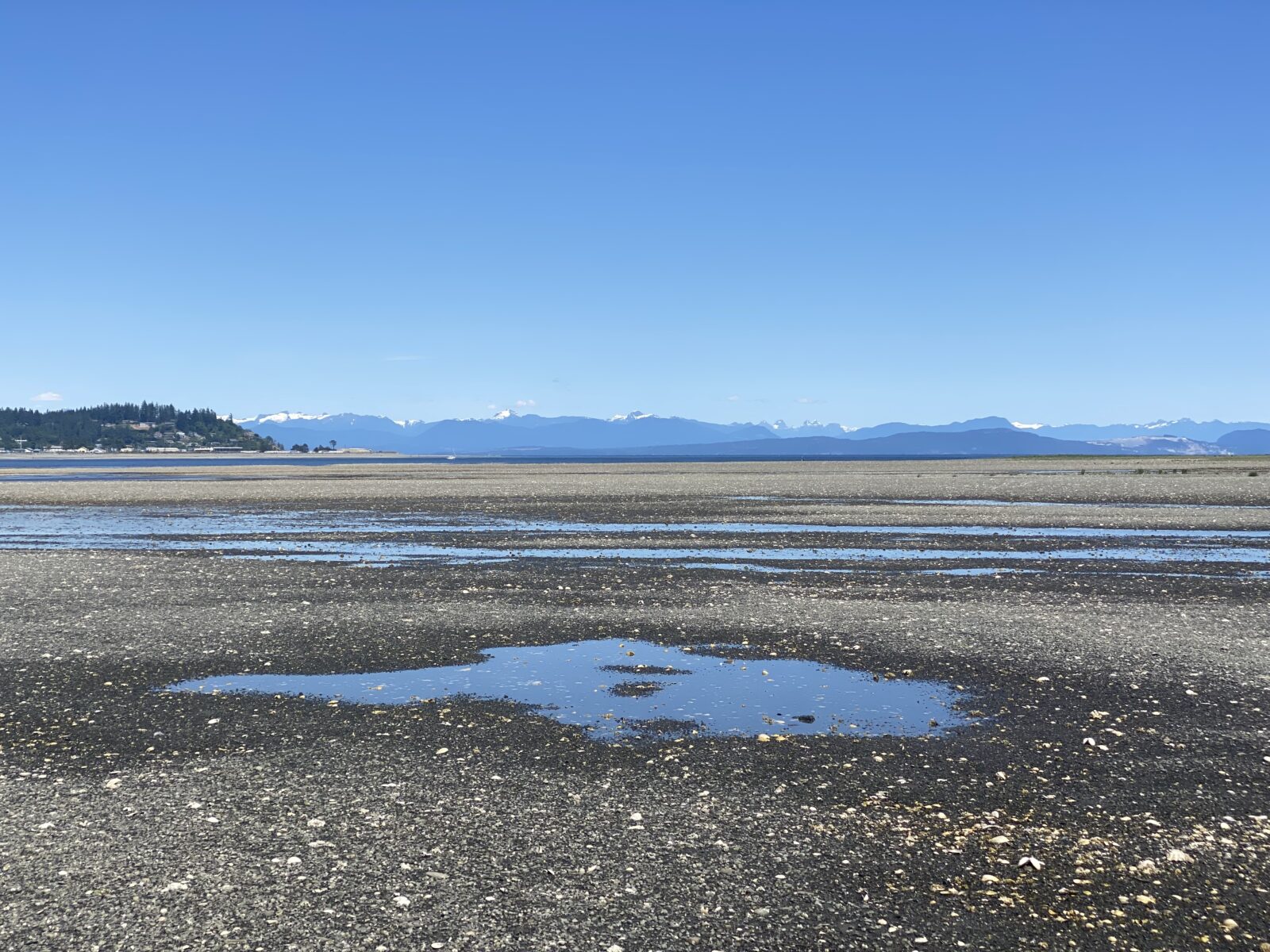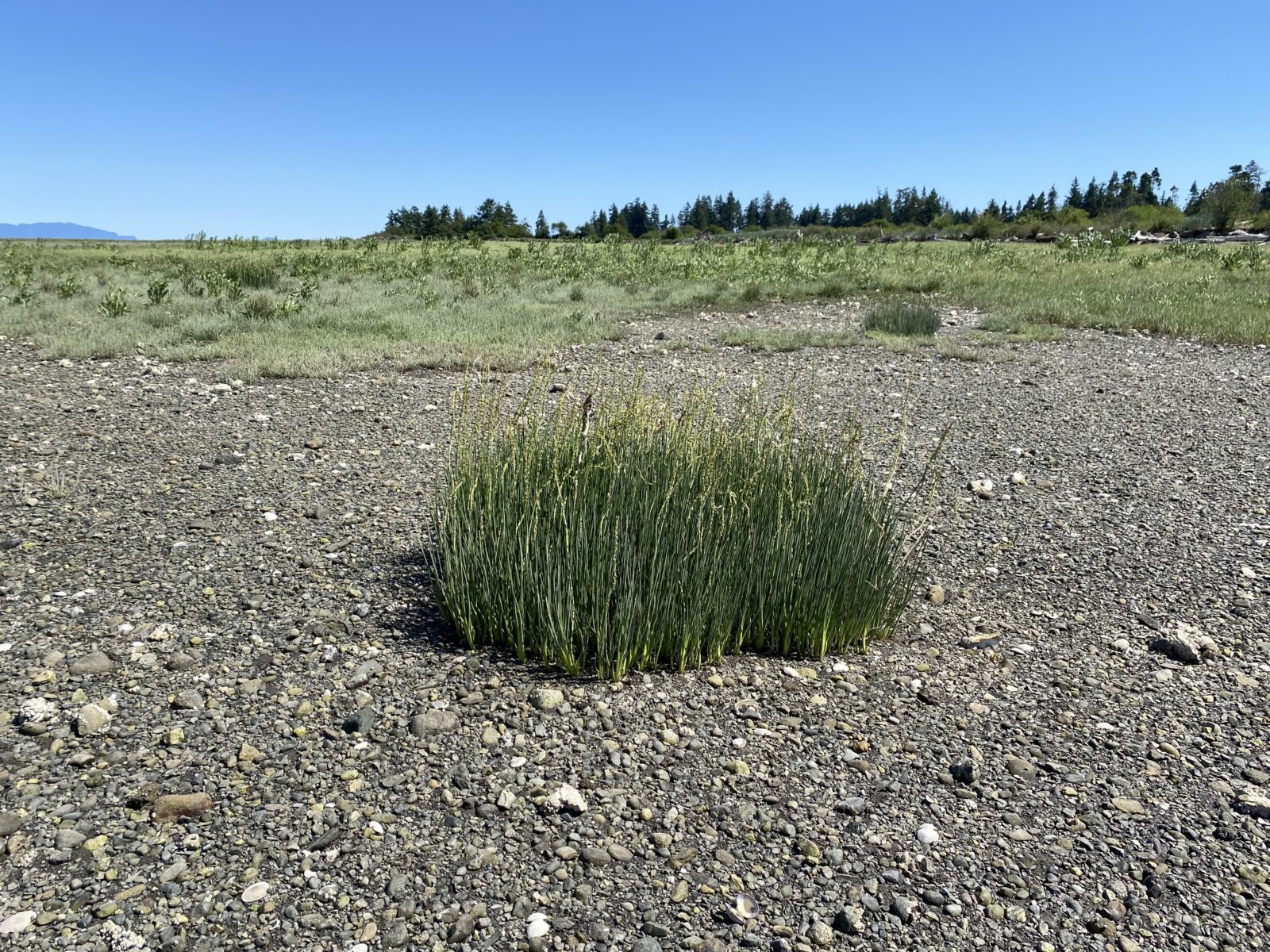
My month-long stay in the Comox Valley is almost at an end, so today I took one last walk to the tidal estuary a few minutes from the place I am staying. The water is so shallow that at low tide as much as a kilometer of barnacle-crusted rocks, broken shells and sandy silt is exposed. Today the tide was the lowest I had seen (see the photo above), reducing the waters of the strait to just a ribbon between the shore on this side and the mountains of mainland British Columbia on the other. I decided to walk all the way out, and it took more than a half an hour to put my toes in the open water.
I was surprised to see how many different kinds of shellfish live in these waters—I would guess I saw the shells of at least two dozen species, mostly clams of various sizes, but literally thousands of oyster shells as well. A small river feeds into the estuary and at low tide it forms channels that support the lives of aquatic plants and even a few tiny fish. Scattered here and there, wherever the land was even a few inches higher were swaths of grasses and other plants that could withstand periods of inundation. Tiny crabs that could have fit easily on top of a quarter scurried from one hiding place to another. And of course the flats I walked on were home to so much that I couldn’t see, or at least failed to notice.
One particular cluster of plants stuck out, literally, from the rubble. I hadn’t seen any other plants like it, and indeed there was no other vegetation of any sort near it. ‘Why is it there?” I asked myself. Why only there, and why only it? That got me thinking about the whole idea of habitat. There was something about that spot that was perfect. That spot and no other allowed that plant to fulfill its purpose, to reach its potential—words that we more often use when we talk about people, but nonetheless apply to all living things.

As I crunched my way back across the flats, my thoughts stayed on the idea of how there is a right place for all living things. How when that place vanishes they do too, and when it is sustained, they thrive. I saw myself as both an interloper in their habitat and as a member of a species able to make a wide range of habitats its own. We put on shoes of various sorts to go places bare feet can’t take us. We pile on parkas and long underwear to live where we would otherwise freeze. We build structures to keep inhospitable climates out, and invent ways of travel that extend our range far beyond what we could reach with only our bodies’ capabilities.
The definition of habitat is quite simple. It is”the natural home or environment of an animal, plant, or other organism.” So yes, the clams and I were both in our natural habitats in a sense, even though I was just a visitor. When I hike in the forests I belong a little to it but not as fully as the birds, the ferns, and the cedars. My ambles become more special because I know I will be leaving. The flexibility of being human is a great gift, but there’s a loss in it too. Speaking for myself, but perhaps for some others as well, I don’t think it is possible ever to be fully at home anywhere because there are so many other places I can comfortably be. I am not like that plant that found only one option in the middle of that tidal flat and stuck with it. I am partly at home and partly a visitor everywhere I go.
What is my habitat? Well, right at this moment, it is in the living room of my rental in Royston BC, sitting on a leather couch with my iPad balanced on my thighs as I write this. Outside my windows several trees move languidly in the light afternoon breeze. A rooftop of another home is visible between them, habitat for others of my species. It’s warm enough to be wearing a t-shirt and shorts and no shoes. I have food, air, shelter—all that I need for the opportunity to thrive. When I leave, I will find another, and another, because as long as I can adjust to my surroundings, my habitat is everywhere.
